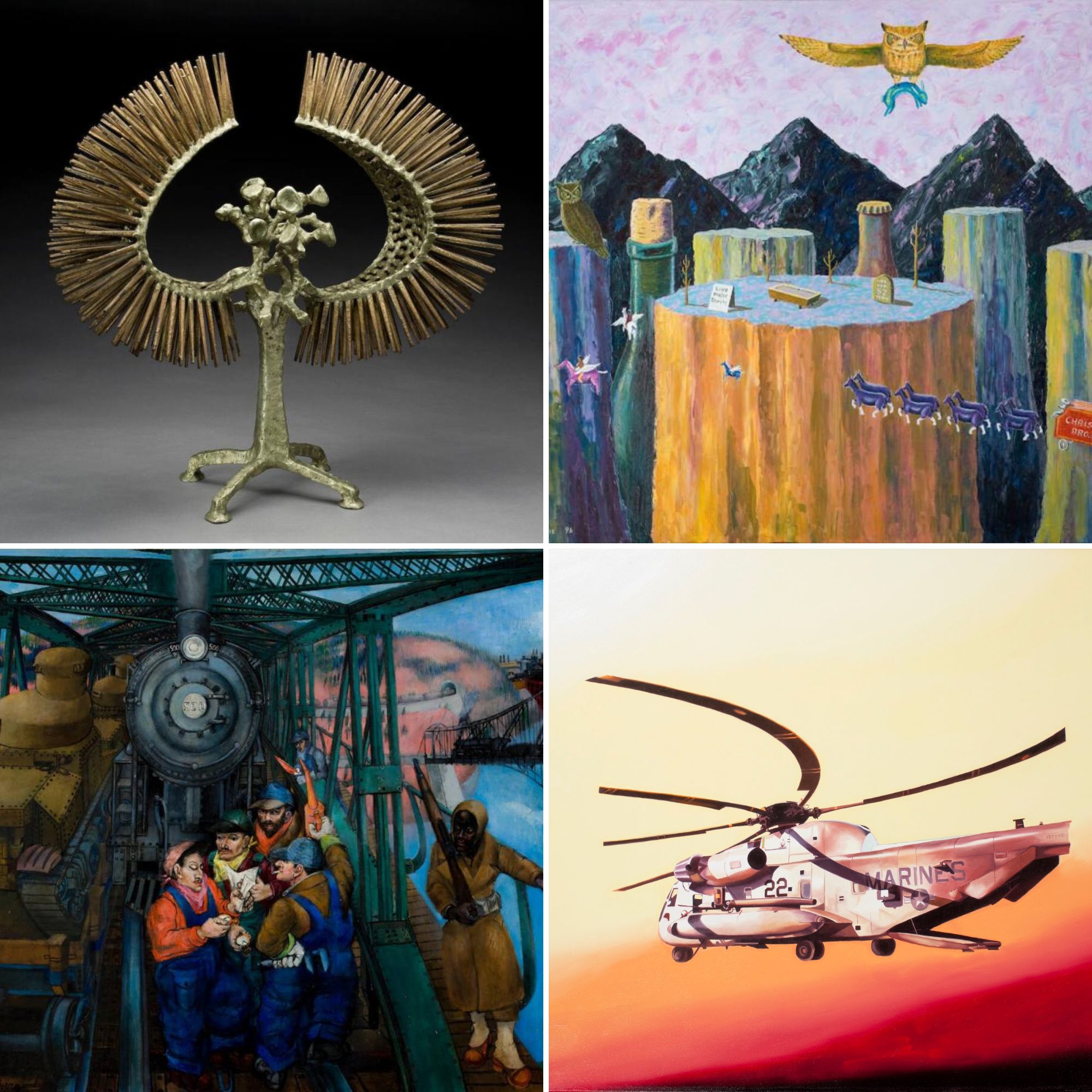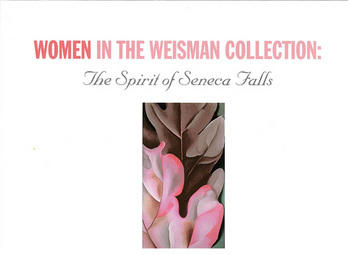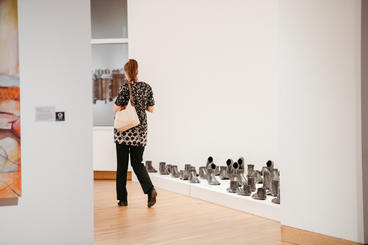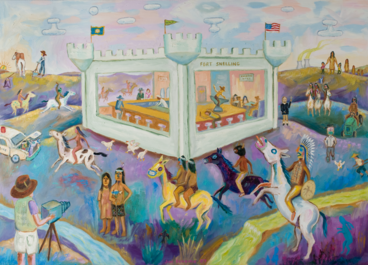
On view November 12, 2022 – May 24, 2026
In his “A Talk to Teachers” from 1963, James Baldwin opined that “American history is longer, larger, more various, more beautiful, and more terrible than anything anyone has ever said about it.” This exhibition, which draws its title from Baldwin's description, showcases works from the Weisman's collection by American artists that demonstrate, confound, and probe these aspects of the American experience. Featuring artistic expressions by Indigenous creators, the descendants of the earliest European colonizers, as well as enslaved Africans, and the work of artists who came to the United States through immigration, this set of objects from the Weisman collection presents a rich and complex panorama of American art.
From its origins in 1934 as the University Gallery, Weisman Art Museum has been committed to collecting the work of American artists. Critically considering the history and nature of that commitment, this new Woodhouse Family Gallery installation highlights the variety and relevance of the museum’s holdings of United States art with a focus on the many contested terrains at play in American art, history, and experience.

Image credits: (Top) Jacob Lawrence, Dancing Doll, 1947. Egg tempera on hardboard, 20 1/4 x 20 1/8 in. 1978.21.288 (Bottom, clockwise from top left) Harry Bertoia, The Pod, 1956. Steel, bronze, and nickel silver. 25 1/2 x 25 1/2 x 8 in. 1959.11; Jim Denomie, Live Music Tonite, 1996. Oil on canvas, 34 7/8 x 49 in. 2000.36; Phillip Evergood, Wheels of Victory, 1944. Oil on panel, 37 3/4 x 42 1/2 in. 1978.21.830; Megan Rye, Red Helicopter, 2011. Oil on canvas, 35 1/2 x 40 x 2 in. 2012.5


